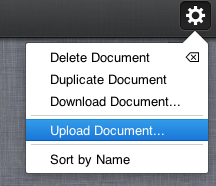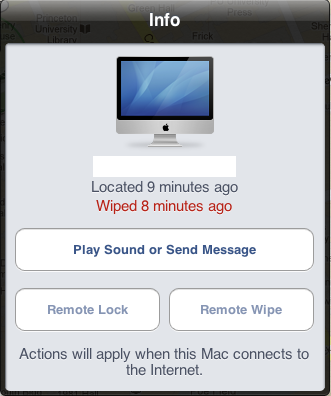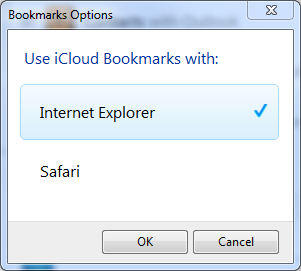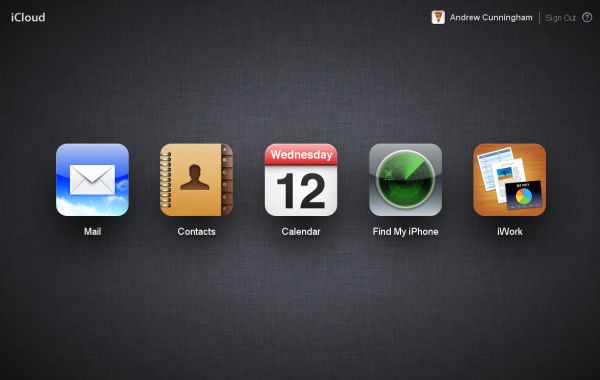iCloud on the Desktop: A Look at OS X 10.7.2 and iCloud for Windows
by Andrew Cunningham on October 18, 2011 3:01 AM ESTiCloud.com is another major piece of the iCloud puzzle. iCloud’s web interface and its associated web apps are a hodgepodge of iOS and OS X design elements - the webmail app is more or less OS X Lion’s Mail.app with iOS Mail’s icons. Pop ups are displayed in iOS-style white-text-on-blue-background boxes. The Contacts web app is likewise a pretty straight port of the Lion version, and the Calendar app is likewise similar. The web interfaces for Contacts and Calendars are, in fact, identical to those that come with Lion Server, though for whatever reason the iCloud web client is much nicer than the bare bones implementation found in Apple’s server OS (I suspect the iCloud webmail client was developed in-house, while Lion Server relies on the open-source Roundcube for webmail and a wide array of other open-source pieces for its backend).

To use the web versions of the iWork apps, you must first install and launch an iCloud-enabled version of either Pages and/or Numbers and/or Keynote - current users of these programs can grab iCloud-enabled updates from the App Store now. Once you've set these programs up to use iCloud, any documents you create in them are automatically stored in iCloud, and can be downloaded from iCloud.com as Pages, Word, or PDF files. You can also upload Pages, Word, and text files for editing on your iCloud-enabled devices (Numbers will let you upload Numbers, Excel, and CSV files, while Keynote lets you upload Keynote, and Powerpoint files).




iCloud for Windows
To get iCloud set up via Outlook, you’ll need to have an Outlook profile created - you just have to launch Outlook once to do this, and you don’t need to have any accounts configured in the client already. If this has been done, clicking the checkboxes in the control panel will set everything up for you automatically.
You can also sync bookmarks, both with Internet Explorer and Safari for Windows 5.1.1 - clicking Options will allow you to choose between the browsers, provided you have both installed.

Photo Stream is available in Windows, which is a nice touch, even if it isn’t as seamless as in its OS X/iOS implementation. By default, it creates a Photo Stream folder in your My Pictures folder. In that folder, there are two additional folders - one for downloading of pictures that are already in your Photo Stream, and one for uploading new pictures into Photo Stream from your PC.

Conclusions
The second thing iCloud is trying to do - visible particularly through Documents in the Cloud, iTunes in the Cloud, and Photo Stream - is to serve as the connective tissue between all of your many devices (as long as your devices aren't running, say, Android, or some flavor of Linux). It's generally more useful on this account (Photo Stream is very easy to get used to if you're in the habit of taking a lot of pictures or screenshots), but it won't be as useful as it could be unless developers begin updating their apps to take advantage of iCloud's APIs. The trouble here is that some of those developers (Microsoft chief among them) have their own cloud services to push. Only time will tell how popular iCloud will become among third parties.
None of this is to say that iCloud won’t be a success, or at least more of a success than MobileMe ever was. The services lost in the transition from MobileMe to iCloud (iDisk and iWeb publishing among them) are mostly replaceable, it’s now free of charge and, critically, it brings reasonably sophisticated services to people who previously might not have bothered to set them up: synchronizing mail, calendars, contacts, photos, documents and the rest between several different devices is now something a casual user can do without too much effort.
Whether iCloud succeeds in the long run depends largely on whether those novice users (and developers) take advantage of its features, and on the service’s reliability once it’s handling data syncing and data backup for millions of Macs and iOS devices.













16 Comments
View All Comments
Biscuit1018 - Wednesday, October 19, 2011 - link
It depends on what you want.Its an assumption that most people need access to M/S SkyDrive or Google's Cloud Sync (or whatever's its called).
For some people a phone (like an iPhone) that works well out the box, has many great apps, and works well with an eco system.
My family have the full range of mobile devices and actually managing them all is very simple. Plus it helps drive VOD, content sharing etc.
I also need a tablet and I dont want to manage two different ecosystems. Its unfortunate but M/S are late to the party here.
Of course you are now going to say that with an XBox or a Media Centre etc. you can do the same thing and you probably can.
Its a matter of personal choice. For someone to say that WP sucks is naive. For you to beat your chest and slate Apple.. well also nonsense isnt it?
Where M/S will have it over the others will be next year when WP8 comes out and there is a working tablet. If all neatly integrates with the desktop Outlook etc and SkyDrive then M/S has a strong play.
I look forward to Windows 8 but until then M/S does not tick all the boxes
khurt - Thursday, October 20, 2011 - link
"You should, however, note that iCloud only wants to work with Apple-supplied programs on OS X - if you want your mail in Outlook or Thunderbird or your bookmarks in Firefox or Chrome, too bad."True. True. But … anyone is free to use the published API for iOS and OS X to write iCloud integration into their apps.
http://thenextweb.com/apps/2011/10/18/fantastical-...
http://blog.agilebits.com/2011/10/on-1password-and...
"...... iCloud on OS X is all about locking you into Apple’s ecosystem."
Where have they locked the user in with iCloud? There is a developer API. Developer are free to write any software for iOS or OS X that can leverage iCloud.
But then this article is about iCloud on Windows. Windows has no ecosystem lock in.
Mystermask - Saturday, October 22, 2011 - link
This kind of hypocrisies is unfortunately all to common among Windows users ..name99 - Saturday, October 22, 2011 - link
khurt's point bears repeating.It's hard to see exactly how a set of published APIs, based on standard internet technologies like SSL and IMAP, corresponds to "lockin".
This is the same BS that we've seen for ten years now. Apple chooses to use AAC --- OMG, proprietary! Apple chooses to use h.264 --- OMG lockin. So use of international standards, which I can buy and use to implement my own code or HW, is "lockin", but apparently WMA or WMV --- no standards, changed by MS as they feel like it --- correspond to freedom or something?
Andrew.a.cunningham - Thursday, February 2, 2012 - link
I know these comments are from, like, awhile ago, but I just saw them and wanted to throw this out there: http://mjtsai.com/blog/2012/01/25/pdfpen-and-iclou...No iCloud API access if you're not in the App Store. So, even if you're not using Apple products, Apple gets its cut.
Also, I don't know how saying "Apple tries to lock you in," which is demonstrably true, implies some anti-Windows bias. Everyone tries to lock you in these days. This post is about Apple products, so Apple lock-in is what we're going to talk about.
rdamiani - Sunday, October 30, 2011 - link
The switch to iCloud breaks any Mac or iOS device that can't run Lion or iOS5 though. In my house, that's one mac and two older iPhones that can't connect to iCloud, which is a bummer.Having more than 1 Apple ID when you enable iCloud is a real problem as well. You can't switch accounts easily because Apple imposes a 90-day delay on account switching.